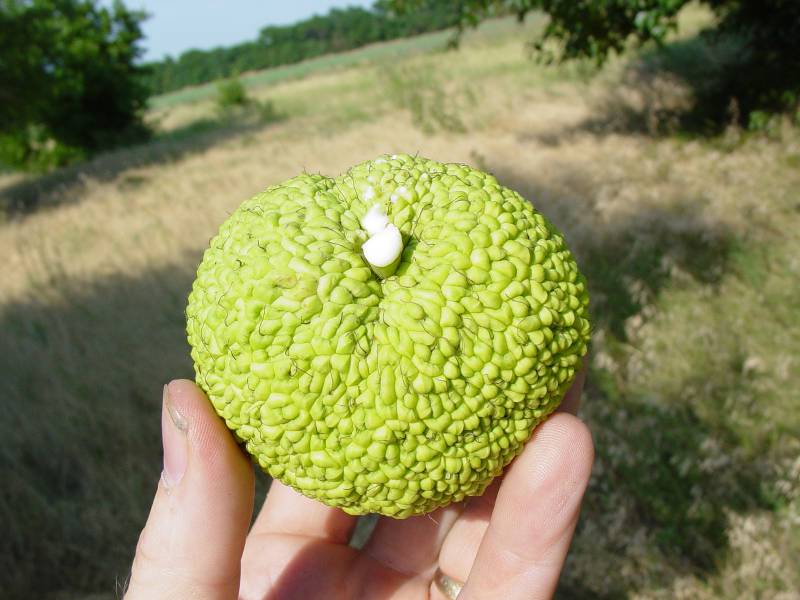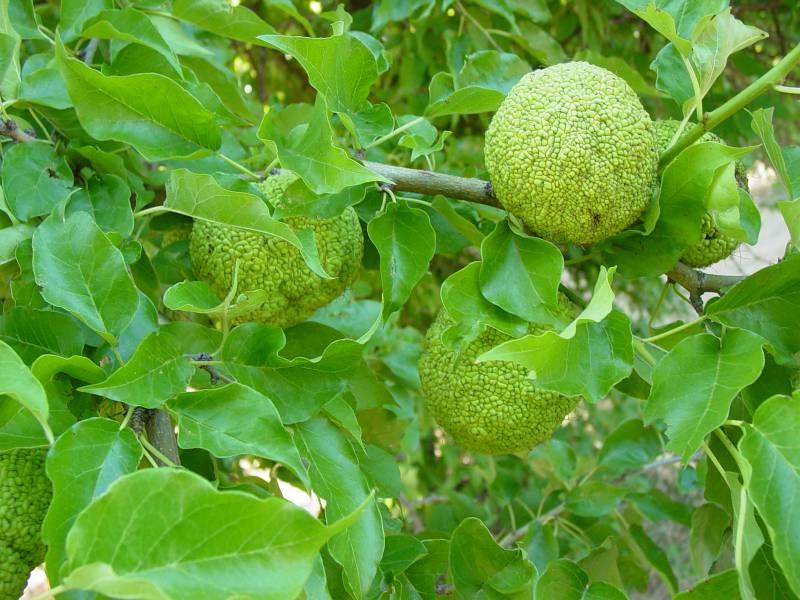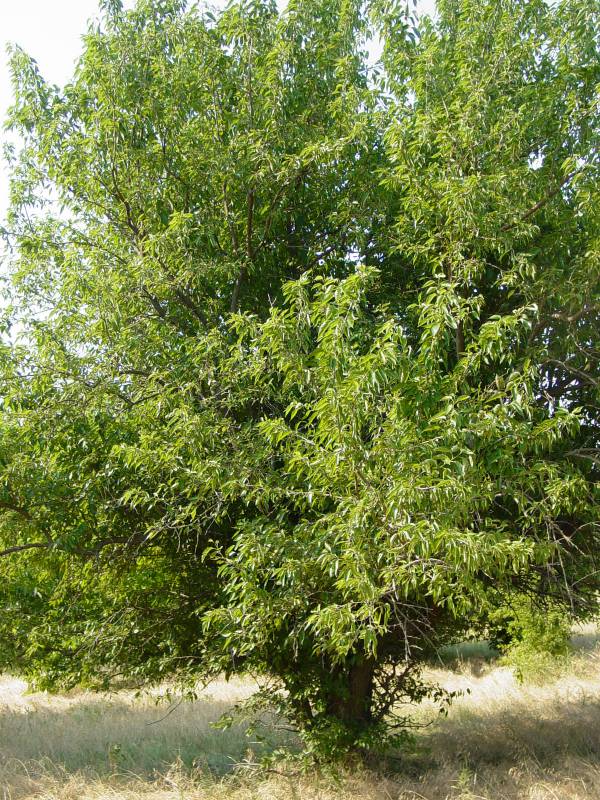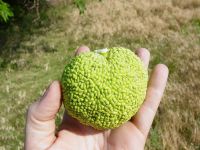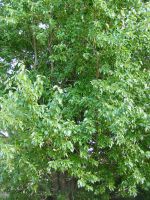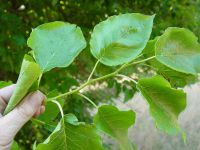Distribution: Occurring east of the Cascades crest in southeastern Washington; south-central Washington to California, east to west-central Idaho, native from the south-central U.S. to the mid-Atlantic states.
Habitat: Open, disturbed areas, often along riparian corridors or abandoned fields.
Flowers: May-June
Origin: Introduced from elsewhere in United States
Growth Duration: Perennial
Conservation Status: Not of concern
Pollination: Wind
Deciduous, dioecious, brownish-barked trees 5-20 m. tall, the branches armed with stout spines 1-2 cm. long, the juice milky.
Leaves alternate, entire, long-petiolate, the blades ovate-lanceolate, 5-12 cm. long.
Staminate flowers in axillary, subglobose, pedunculate racemes, the pedicles slender; perianth 4-lobed nearly to the base; stamens 4, opposite the lobes; pistillate inflorescence a dense, globose, subsessile, axillary head; perianth 4-lobed, covering the ovary; style 1, filiform.
Mature fruits in a large, rough, globose cluster 7-12 cm. in diameter, the achenes concealed in the fleshy receptacle.
Publication: Ill. Handb. Laubholzk. 1: 806. 1906.
Ioxylon pomiferum Raf., orthographic variant
Maclura aurantiaca Nutt.
PNW Herbaria: Specimen records of Maclura pomifera in the Consortium of Pacific Northwest Herbaria database
WA Flora Checklist: Maclura pomifera checklist entry
OregonFlora: Maclura pomifera information
E-Flora BC: Maclura pomifera atlas page
CalPhotos: Maclura pomifera photos

